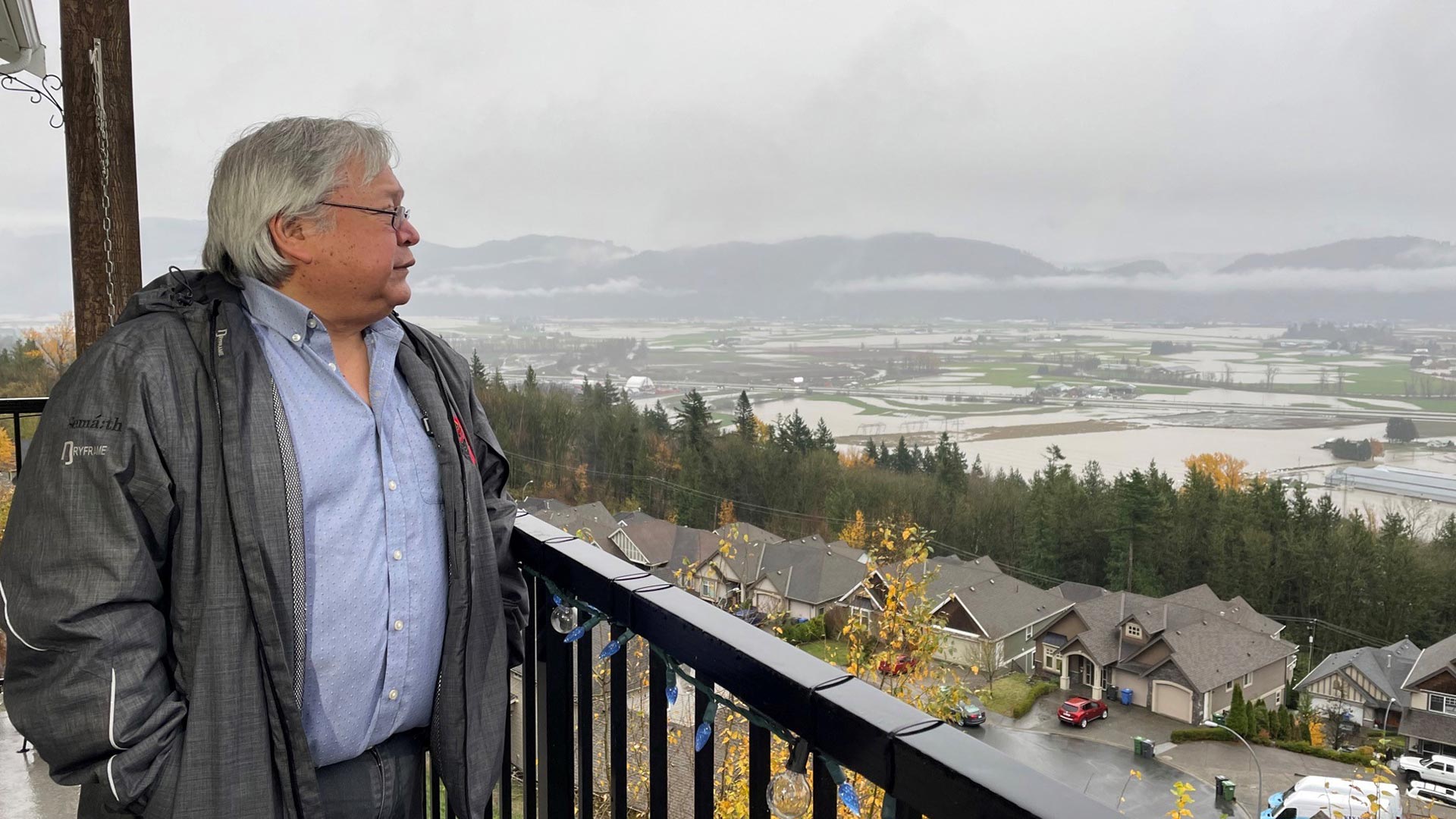Catastrophic flooding caused by recent torrential rains in British Columbia has affected more than 100 First Nations, shattered major infrastructure, and halted the provincial food supply chain.
“The grocery store shelves are bare,” said Stewart Phillip, grand chief of the Union of BC Indian Chiefs (UBCIC), from Penticton.
“We’re running out of gas now.”
The ripple effect of the torrential rain has touched all 204 First Nations in the coastal province, Phillip said, but the crisis is more than a weather event.
“It’s the cumulative impacts of the industrialized exploitation of the land and waters over the last 100 to 150 years in British Columbia,” he noted Friday.
“The land is speaking to us, and we need to listen.”
Phillip said nearly annual wildfires that plague the province during summer months helped set the conditions for this devastating flooding and the dangerous mudslides that followed.
“Starting as early as 2003…millions of acres of critical habitat for wildlife that Indigenous peoples rely on for subsistence have been allowed to burn (as part of the province’s fire management plan),” Philip said in a telephone interview.
“Once the trees are gone, the land has no capacity to hold water. And the soil is absolutely cooked.”
Terry Teegee, regional chief for the Assembly of First Nations in B.C., agreed human behaviour had made things worse.
“We are Ground Zero for climate change,” he said on his Facebook page.
“In the last 5 months we’ve had a “Heat Dome”, third worst wildfire season on record, and a fall season that has seen record breaking rain fall by a number of “Atmospheric Rivers” passing through BC!
The term “atmospheric river” refers to long, high plumes of moisture-laden air that bring rainfall of varying intensity to the West Coast.
Teegee said the phenomenon has been “made worse” by the effects of climate change and poor land and water management.
“Time to change our behaviour and commit to real solutions!” he added in his online post.
“It won’t be easy, but at this point, we have no choice! We are in our third State of Emergency in the last year, from the Pandemic, to wildfires and now floods!”
Chief Dalton Silver of the Sumas First Nation, located outside flood-ravaged Abbotsford, B.C., has only to look out his window at flooded Sumas Prairie.
“That used to be Sumas Lake 100 years ago,” he told APTN News.

The lake was emptied in the 1920s for European settlers to farm in the Fraser Valley, while Sumas First Nation members were forced onto a reserve.
The water-soaked Prairie, home to numerous farms, homes and businesses, is now uninhabitable.
“They never should have drained that lake in the first place,” Silver added. “We say through our teachings that that’s always something that will come back and haunt you.
“Repercussions of trying to alter what nature’s already put there.”
Silver said the lake is kept dry by a system of channels and a pump that runs 24 hours a day. The possibility of the pump failing has put numerous neighbourhoods in Abbotsford at risk of major damage.
“I think this is just a part of history that our people right across the country have seen,” he added of Indigenous Peoples.
“Climate is changing and our people have always adapted, and I think newcomers probably need help in adapting.”
Leah Ballantyne, an Indigenous lawyer who works with West Coast Environmental Law (WCEL) and First Nations in the lower Fraser Valley, said the impacts of colonial decision-making on the land and water are documented in a new report created with help from area elders and knowledge holders.
“Chapter 7 in our report (Revitalizing Indigenous Law with the Lower Fraser Fisheries Alliance) is about consequences, enforcement and teachings…,” Ballantyne said Friday.
“Consequences may range from mild to severe, and may serve as lessons that create behavioural change or cause harm, natural disasters, tragedies, and sometimes death.”
Ballantyne said the report, published by WCEL’s RELAW program last April, is now sounding like a premonition.
“It’s kind of amazing,” she added. “Having this kind of devastation happen now, only shows how important that those Indigenous laws really are to the way that we make decisions that impact the uses of land, air and water.”









